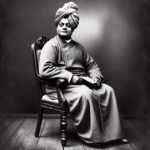Shanta Sinha: The Inspiring Advocate for Children’s Rights and Education
Dr. Shanta Sinha is a remarkable figure in the field of social justice, particularly known for her tireless work in advocating for children’s rights and education in India. Her unwavering dedication to ending child labor and ensuring education for every child has left a lasting impact on Indian society. Shanta Sinha’s contributions have not only transformed the lives of thousands of children but have also played a significant role in shaping policies and movements around education and child welfare in India.
Early Life and Education
Shanta Sinha was born on February 22, 1950, in Telangana, India, into a family that valued education and social justice. Her early exposure to the struggles faced by marginalized communities in rural India instilled a sense of social responsibility and activism within her. She completed her early education in Hyderabad before pursuing higher studies at the prestigious Jawaharlal Nehru University (JNU) in New Delhi. Here, she earned her doctorate in political science, specializing in issues related to rural development and child labor.
Her academic journey provided her with a solid foundation in understanding the social, economic, and political challenges facing marginalized children and communities in India. This knowledge would later become the bedrock of her work in the field of child rights and education.
Shanta Sinha’s Mission Against Child Labor
Shanta Sinha’s journey as a social activist began with her work in the rural areas of India, where child labor was rampant. Recognizing that millions of children were working in hazardous conditions instead of attending school, she dedicated herself to ending this practice and ensuring that every child had access to education.
In 1989, Dr. Shanta Sinha founded the MV Foundation, a non-governmental organization that works towards the abolition of child labor and the promotion of education for all children. The MV Foundation’s mission was simple yet powerful: to ensure that every child, especially those from poor, marginalized communities, was sent to school instead of being forced into labor.
Through her leadership, the MV Foundation spearheaded various initiatives, including awareness campaigns, community outreach programs, and partnerships with local governments. Her approach was focused on grassroots mobilization, which involved engaging with families, communities, and local authorities to highlight the importance of education and the dangers of child labor.
One of the most notable achievements of Shanta Sinha’s work with the MV Foundation was the implementation of a community-based model for child labor eradication. This model involved working directly with village communities, convincing parents to send their children to school, and providing them with the resources and support needed to make education accessible.
Impact and Contributions to Education
Shanta Sinha’s contributions to education have been profound and far-reaching. She is credited with playing a pivotal role in the movement for universal elementary education in India. Her efforts were central to the creation of the Right to Education Act (RTE), which was passed in 2009. The RTE Act made it mandatory for children aged 6 to 14 years to receive free and compulsory education, a landmark achievement for India’s education system.
Dr. Sinha’s work also emphasized the importance of bridging the gap between rural and urban education. She advocated for education that was relevant to the needs of rural children, focusing on practical and vocational training that would enable them to contribute meaningfully to their communities. Her vision for education was one that transcended traditional academic boundaries, ensuring that children from all backgrounds could access education and build a better future for themselves.
Daily Life and Work Ethic
Shanta Sinha is known for her disciplined and humble lifestyle. Despite her national and international recognition, she remains grounded and committed to her cause. Her daily routine is focused on outreach, community engagement, and policymaking. As a passionate advocate for children’s rights, Dr. Sinha spends a significant amount of time traveling to rural areas to meet with families, educators, and local leaders.
Her approach to work is both hands-on and strategic. She is known for her patience and persistence, understanding that real change comes from sustained effort and collaboration. Whether it’s addressing a group of schoolteachers or negotiating with government officials, Dr. Sinha’s commitment to the cause shines through in every aspect of her work.
Significance and Legacy
Shanta Sinha’s work has had a profound and lasting impact on the welfare of children in India. Her advocacy against child labor and her role in promoting education have made her one of the most influential figures in Indian social justice. Through her tireless efforts, she has not only improved the lives of thousands of children but has also influenced national policies that promote children’s rights and welfare.
In recognition of her work, Shanta Sinha was awarded the Ramon Magsaysay Award in 2003, one of Asia’s highest honors, for her leadership in eliminating child labor and promoting education in India. She was also appointed as the first Chairperson of the National Commission for Protection of Child Rights (NCPCR), where she continued to advocate for the rights and welfare of children across India.
Her approach to social change, which combines community engagement, education, and policy advocacy, has set a precedent for other activists and organizations working to improve the lives of children and marginalized communities.
Important Facts About Shanta Sinha
- Shanta Sinha is the founder of the MV Foundation, an organization focused on eradicating child labor and promoting education.
- She played a key role in the creation of the Right to Education Act (RTE), which ensures free and compulsory education for children aged 6 to 14.
- In 2003, Shanta Sinha received the prestigious Ramon Magsaysay Award for her work in child welfare.
- She served as the first chairperson of the National Commission for Protection of Child Rights (NCPCR).
- Shanta Sinha’s work has directly impacted over 200,000 children, helping them escape child labor and access education.
Frequently Asked Questions (FAQs)
- What is the MV Foundation?
- The MV Foundation is an NGO founded by Shanta Sinha that works to eliminate child labor and promote education for children in rural India.
- What role did Shanta Sinha play in the Right to Education Act?
- Shanta Sinha was instrumental in advocating for the Right to Education Act, which ensures free and compulsory education for children in India.
- How did Shanta Sinha’s work impact child labor in India?
- Through grassroots initiatives and community-based models, Shanta Sinha’s efforts helped eradicate child labor in several rural areas, providing children with access to education instead of labor.
- What awards has Shanta Sinha received for her work?
- Shanta Sinha received the Ramon Magsaysay Award in 2003 for her contributions to child welfare and education.
Wishing and Conclusion
Shanta Sinha’s legacy as a champion for children’s rights and education continues to inspire change-makers and activists around the world. Her relentless pursuit of a better future for India’s children reminds us of the transformative power of education and the importance of standing up against social injustices. As we honor her contributions, we must continue to support the cause of education, ensuring that every child, regardless of their background, has the opportunity to dream, learn, and thrive. Shanta Sinha’s life work is a testament to the power of compassion, commitment, and perseverance in the fight for social change.










